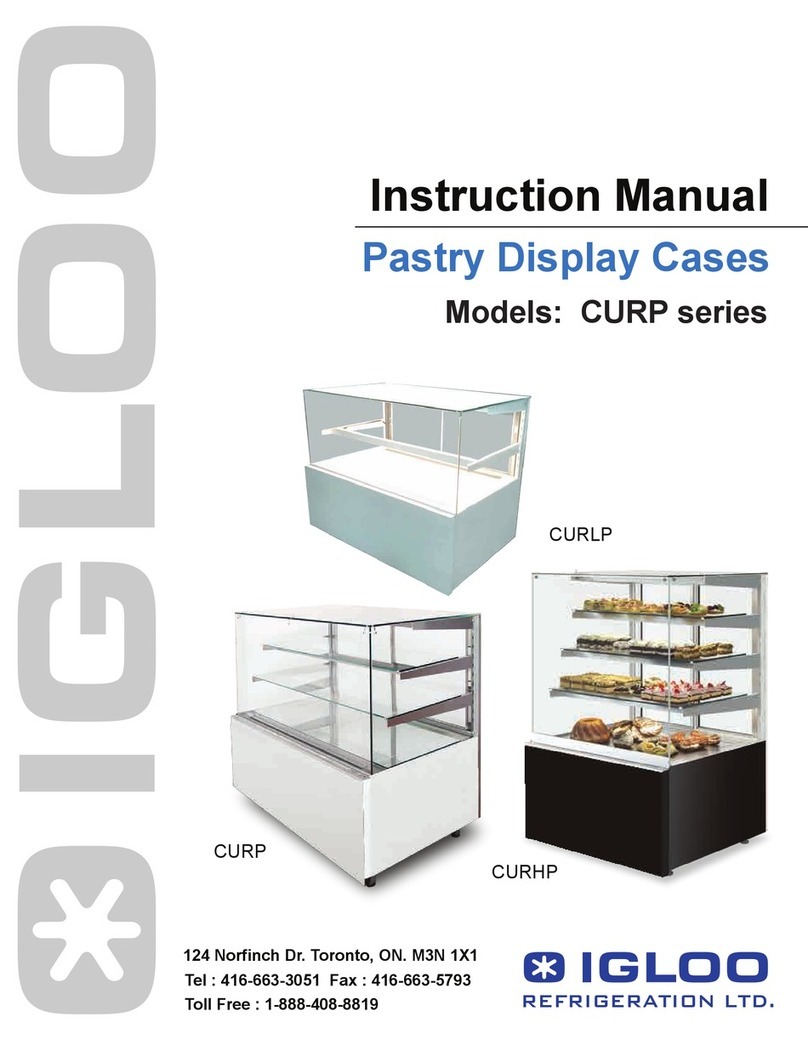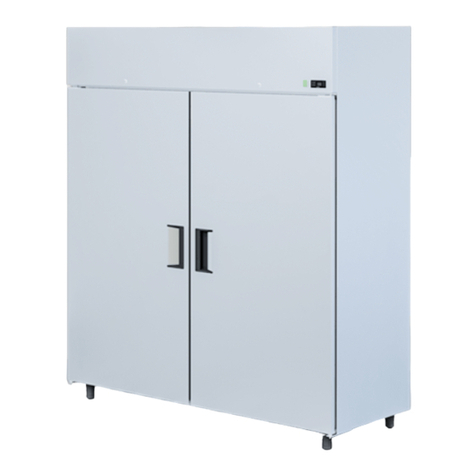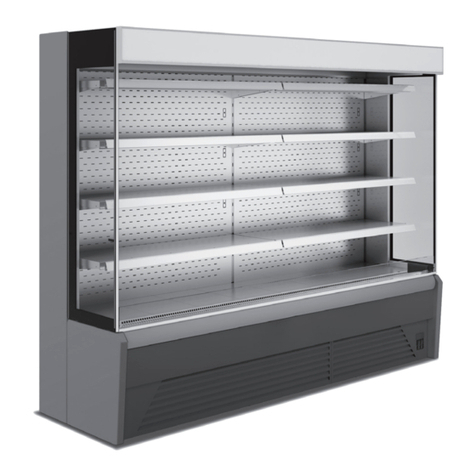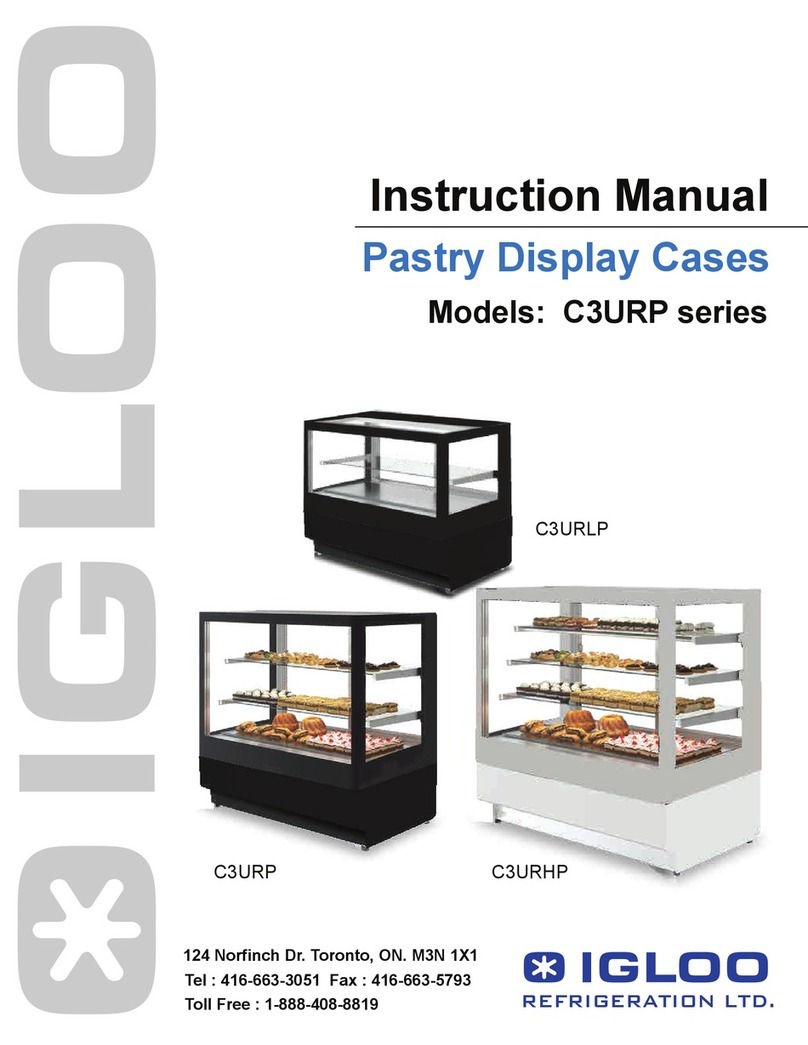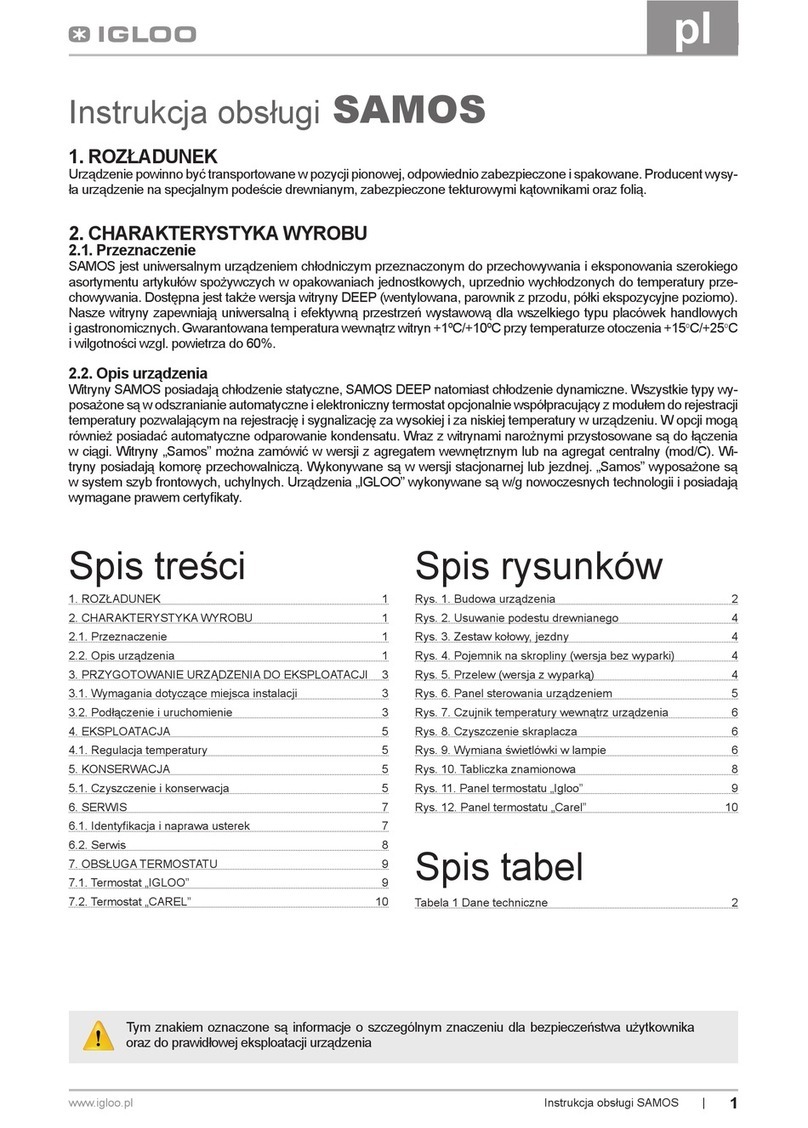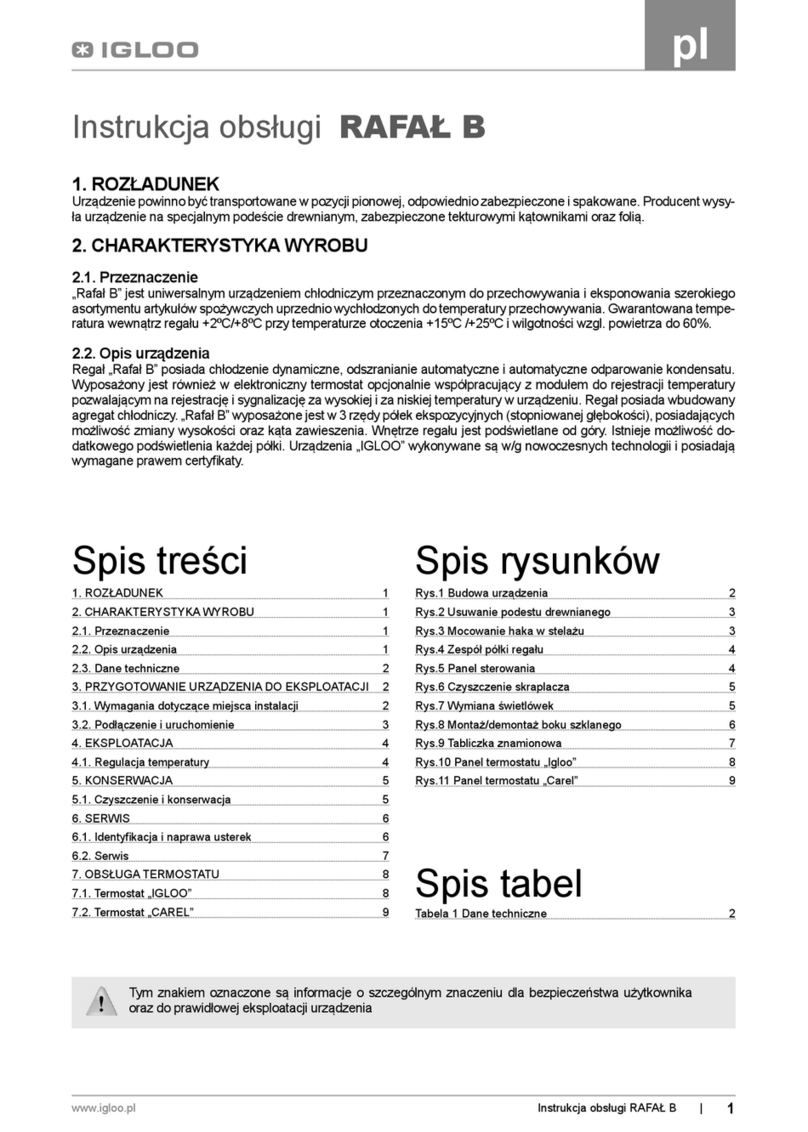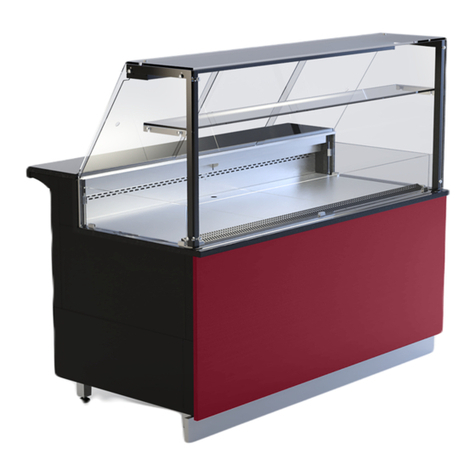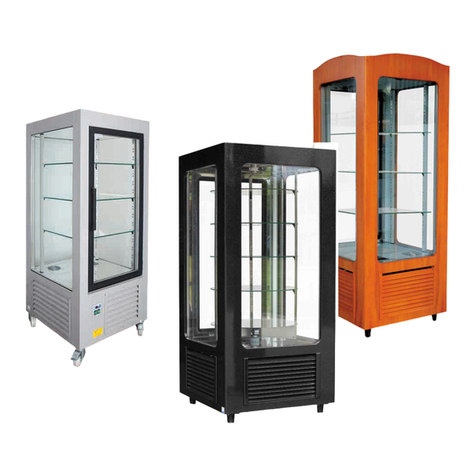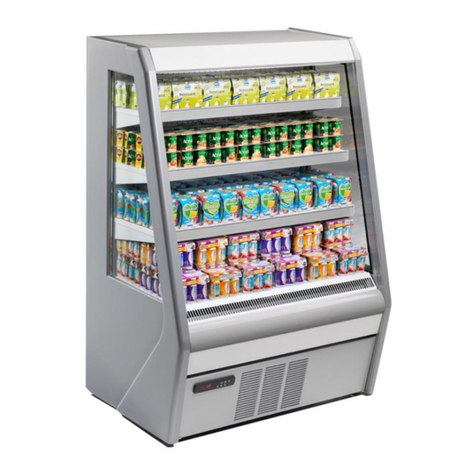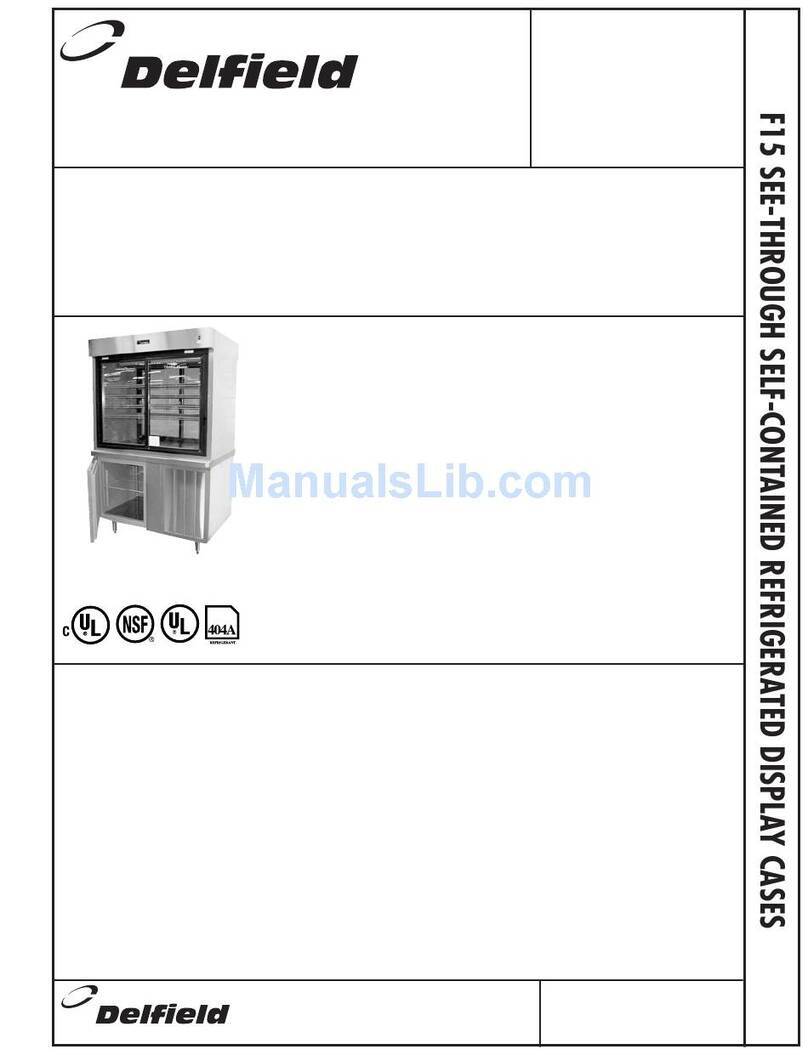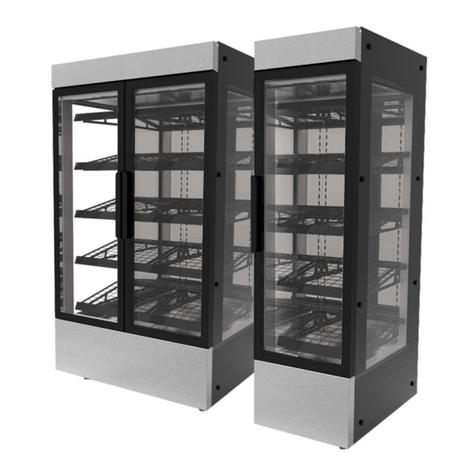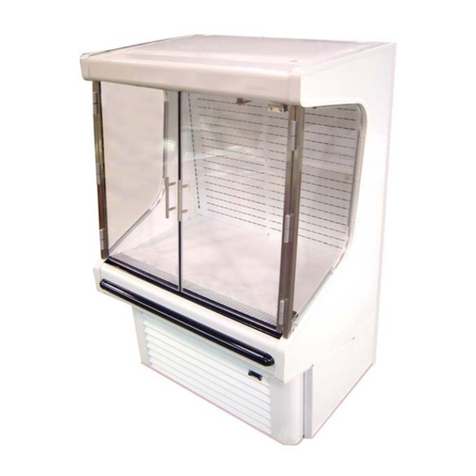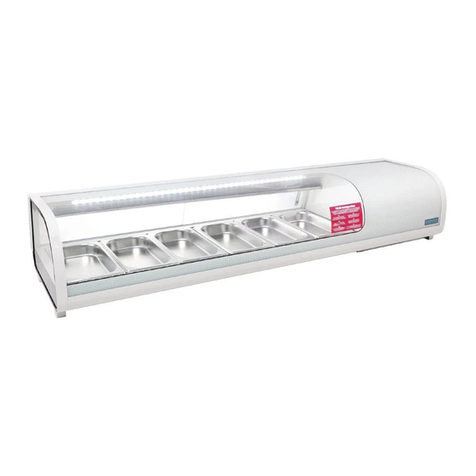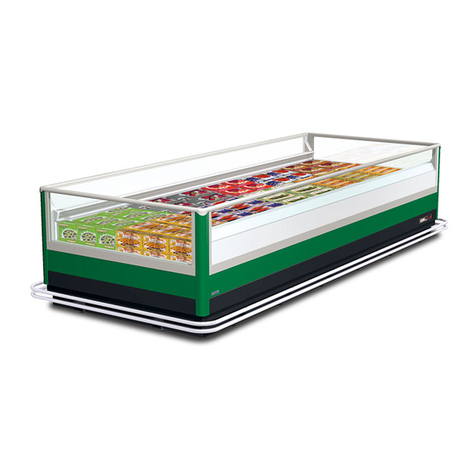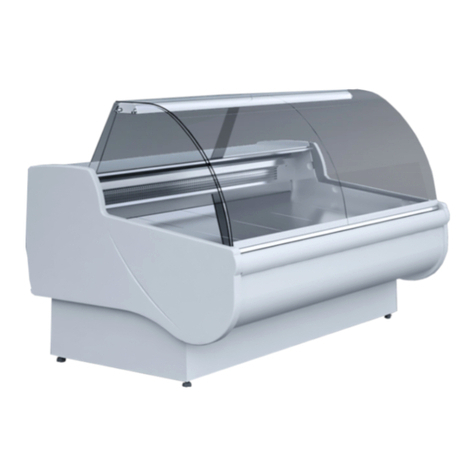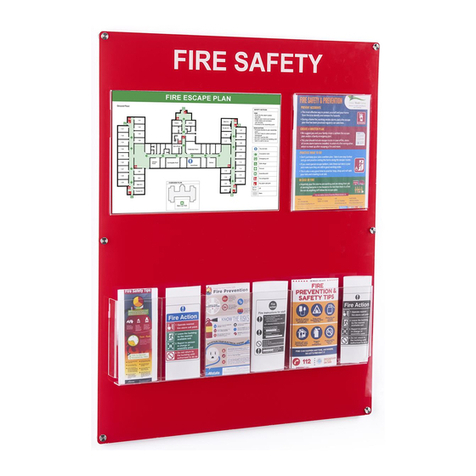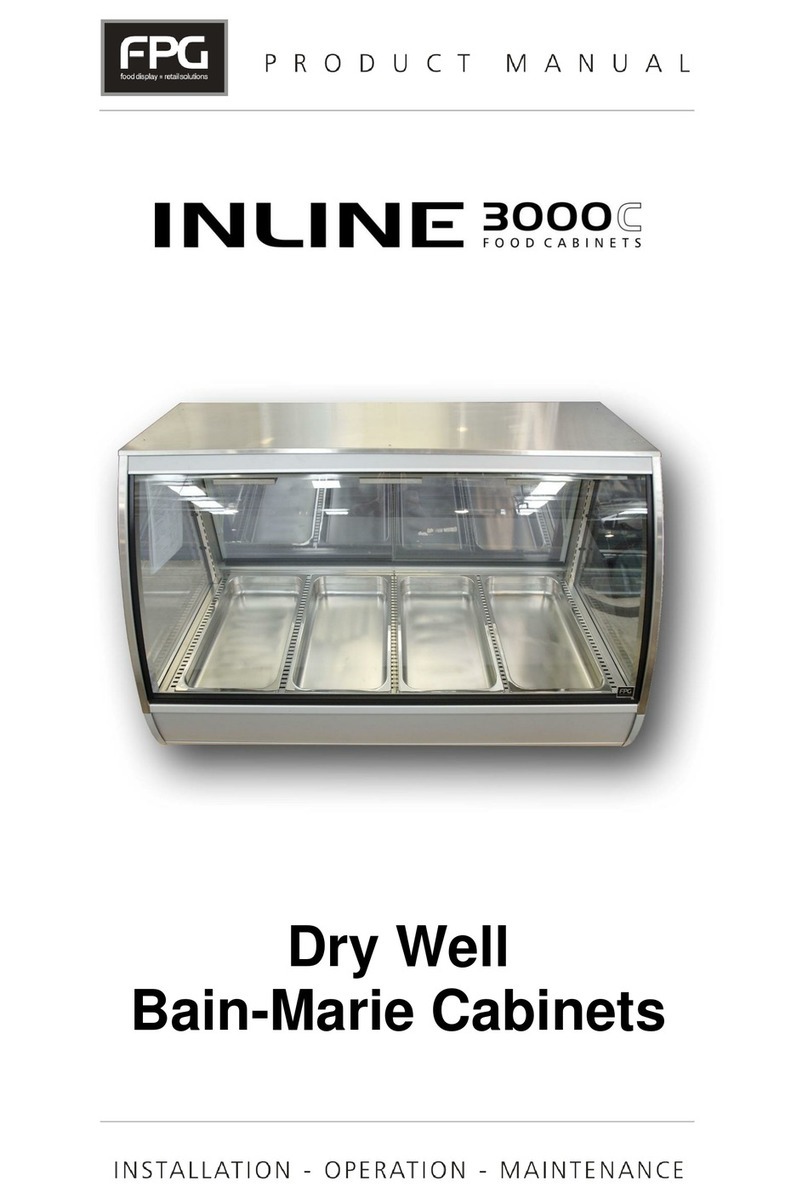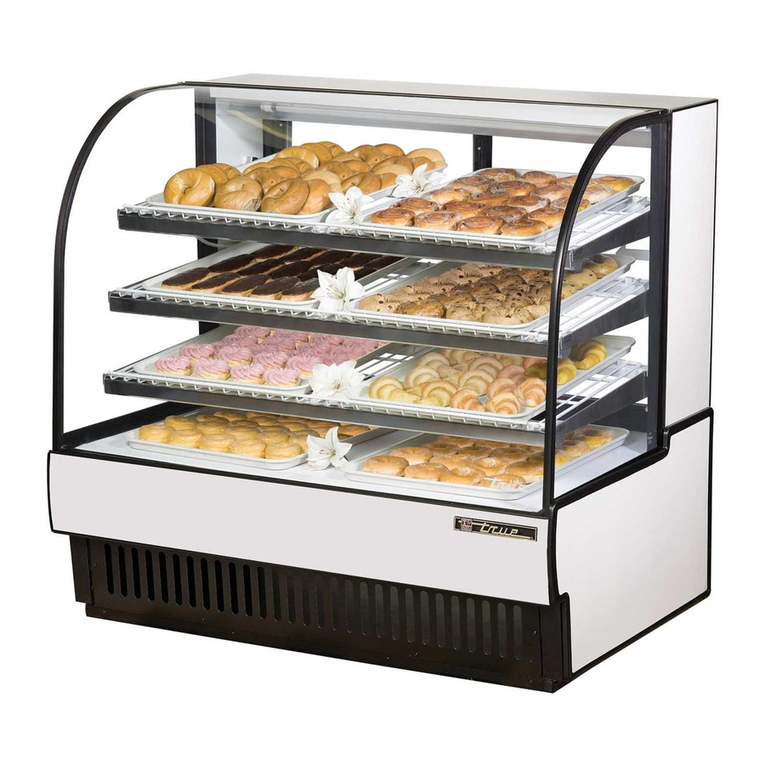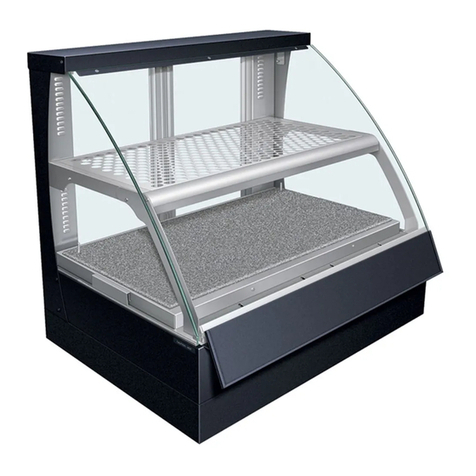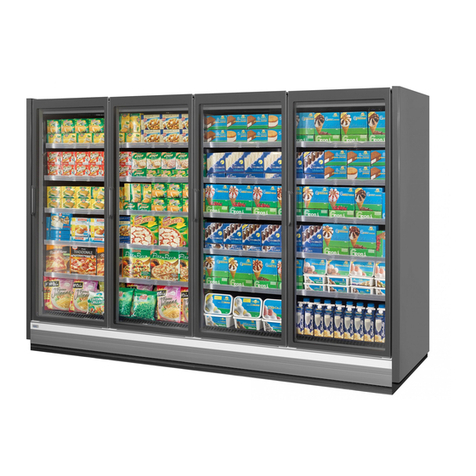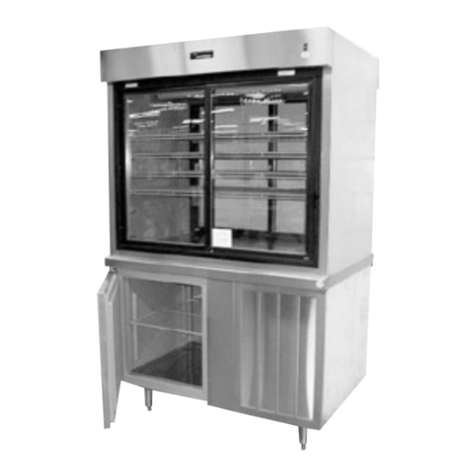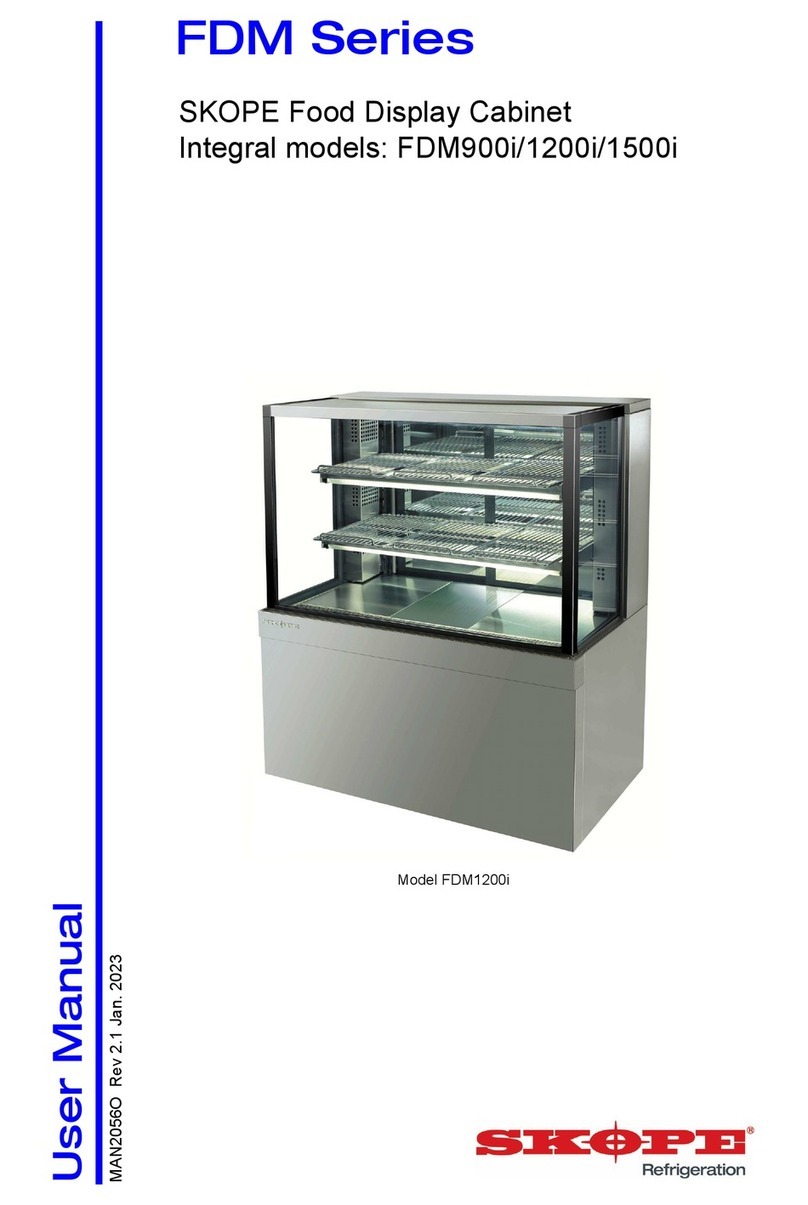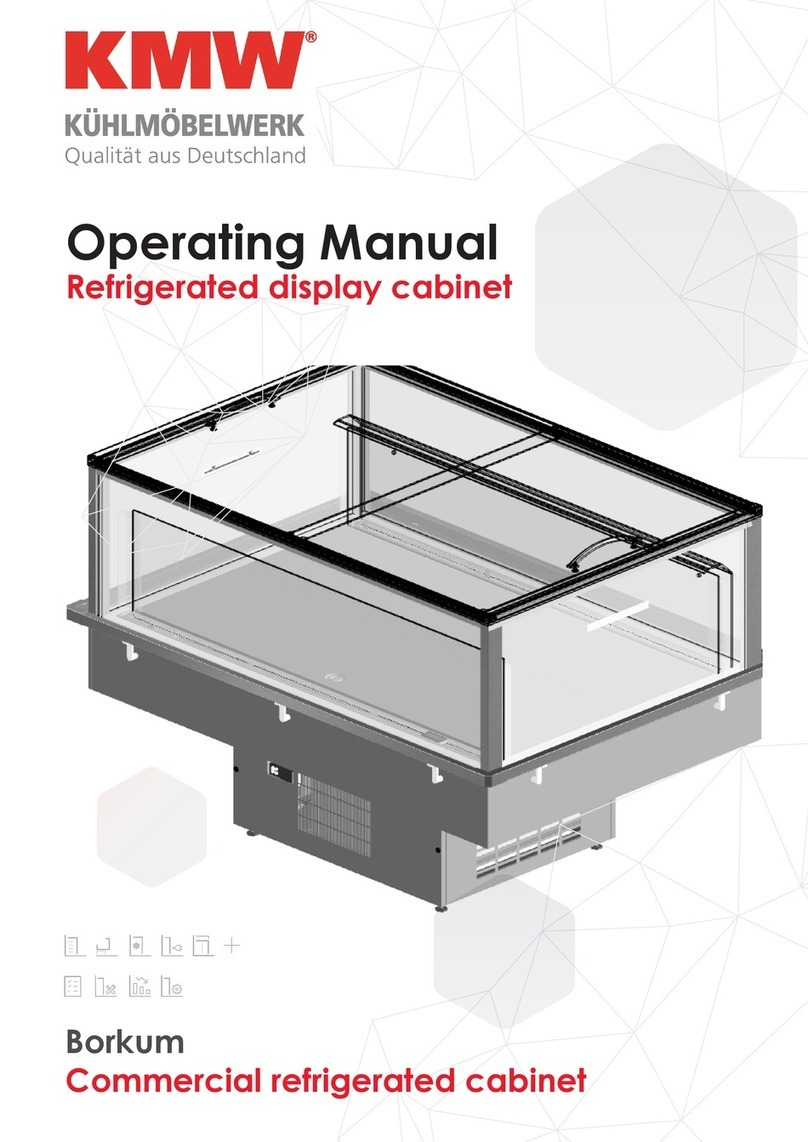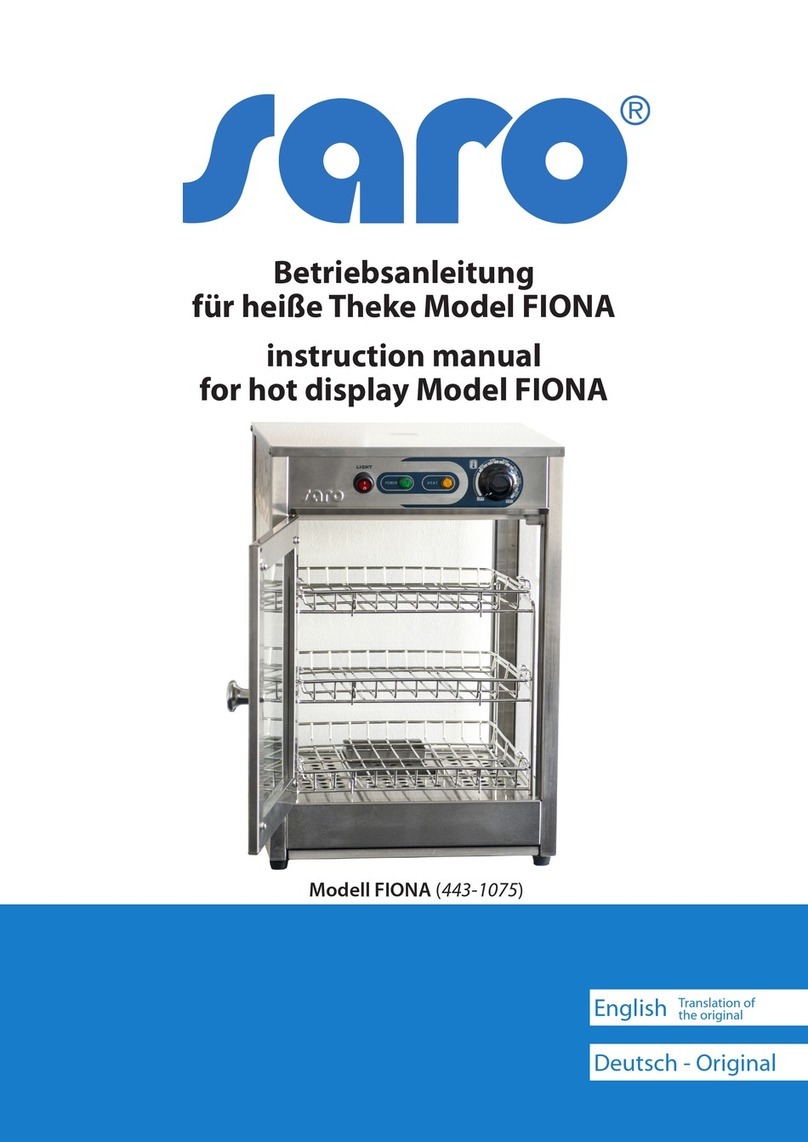
6
pl
Instrukcja obsługi Sylwia www.igloo.pl
6. SERWIS
6.1. Identyfikacja i naprawa usterek
W przypadku wystąpienia jakichkolwiek trudności podczas uruchamiania urządzenia lub podczas jego eksploatacji
należy powrócićdo tych rozdziałów instrukcji obsługi, które wyjaśniająwykonywanąoperacje. Ma to na celu upewnienie
się, czy urządzenie jest prawidłowo obsługiwane. Jeżeli trudności występująnadal, poniższe wskazówki pomogąw ich
usunięciu.
Urządzenie nie pracuje...- Upewnićsię, czy:
• Urządzenie jest podłączone do sieci prądu elektrycznego
• Napięcie i częstotliwość w sieci sąodpowiednie z tymi, jakie zaleca producent (patrz tabliczka znamionowa)
• Włączony jest wyłącznik główny
• Termostat jest załączony (Dotyczy term. Igloo – Jeśli na wyświetlaczu wyświetlająsięjedynie dwie kropki – włącz
termostat)
Urządzenie pracuje, oświetlenie nie świeci...- Upewnićsię, czy:
• Wyłącznik oświetlenia jest w pozycji załączonej
• Świetlówka lub zapłonnik w urządzeniu nie uległy spaleniu
Urządzenie nie osiąga odpowiedniej temperatury, oświetlenie świeci...- Upewnićsię, czy:
• Wyłącznik główny jest w pozycji załączonej
• Nastawa temperatury na termostacie jest odpowiednio ustawiona
• Termostat działa poprawnie
• Skraplacz nie jest zanieczyszczony, w razie potrzeby wyczyścić
• Temperatura otoczenia nie jest wyższa niż25ºC
• Minęło wystarczająco dużo czasu dla schłodzenia produktów
• Otwory wentylacyjne urządzenia nie sązablokowane
(Dotyczy term. „IGLOO”) Termostat wyświetla C0 lub C1 lub C2 zamiast temperatury:
Sytuacja taka ma miejsce, jeżeli zostałuszkodzony jeden
z czujników regulatora temperatury wówczas mogąpojawićsięnastępujące komunikaty:
• C0 - uszkodzenie czujnika temperatury wewnątrz komory –wezwaćautoryzowany serwis
• C1 - uszkodzenie czujnika parownika - wezwaćautoryzowany serwis
• C2 - uszkodzenie czujnika alarmu skraplacza (lub uszkodzenie drugiego czujnika parownika) – wezwaćautoryzo-
wany serwis
(Dotyczy term. „CAREL”) Termostat wyświetla E0 lub E1 lub L0 lub HI lub EE lub Ed lub DF zamiast tempe-
ratury:
• E0 - uszkodzenie czujnika temperatury wewnątrz komory- wezwaćautoryzowany serwis
• E1 - uszkodzenie czujnika parownika - wezwaćautoryzowany serwis
• L0 - alarm niskiej temperatury (niższej niżzadany zakres wewnątrz urządzenia) - wezwaćautoryzowany serwis
• HI - alarm wysokiej temperatury - wezwaćautoryzowany serwis
• EE - błąd wewnętrzny regulatora - wezwaćautoryzowany serwis
• Ed - przekroczenie max. czasu odszraniania
• DF - odszranianie w toku (to nie jest sygnałalarmowy)
(Dotyczy term. „IGLOO”) Urządzenie pracuje, włączona sygnalizacja dźwiękowa...- Upewnićsię, czy
• Skraplacz nie jest zanieczyszczony, w razie potrzeby wyczyścić
• Pracuje wentylator skraplacza
• Temperatura otoczenia nie przekracza 25ºC
Urządzenie pracuje zbyt głośno...- Upewnićsię, czy
• Urządzenie stoi stabilnie i jest prawidłowo wypoziomowane
• Przylegające do urządzenia meble nie drgająpodczas pracy sprężarki agregatu chłodniczego
Odgłosy wydawane przez urządzenia pracujące sązjawiskiem normalnym. W urządzeniach znajdująsię
wentylatory, silniki i sprężarki, które włączająsięi wyłączająautomatycznie. Każda sprężarka wytwarza
pewien hałas podczas pracy. Dźwięki te wytwarzane sąprzez silnik agregatu oraz przez czynnik
chłodniczy przepływający w obwodzie. Zjawisko to jest cechątechnicznąurządzeńchłodniczych i
nie oznacza ich wadliwej pracy.
